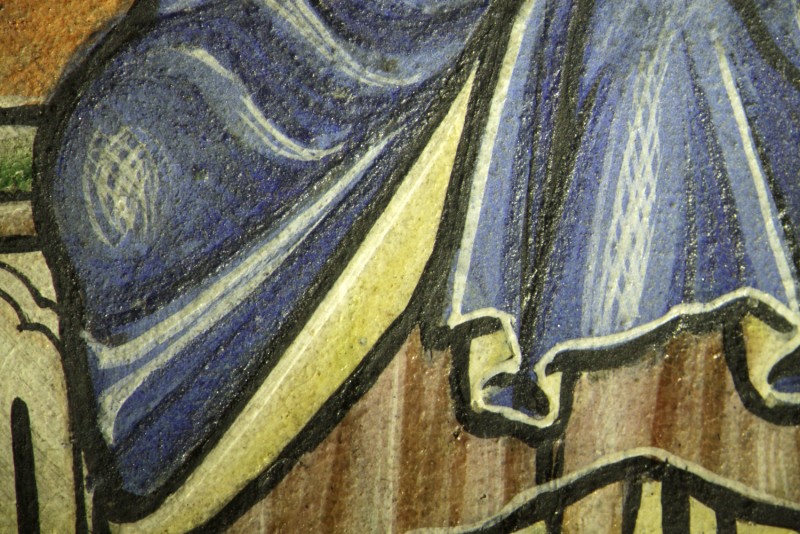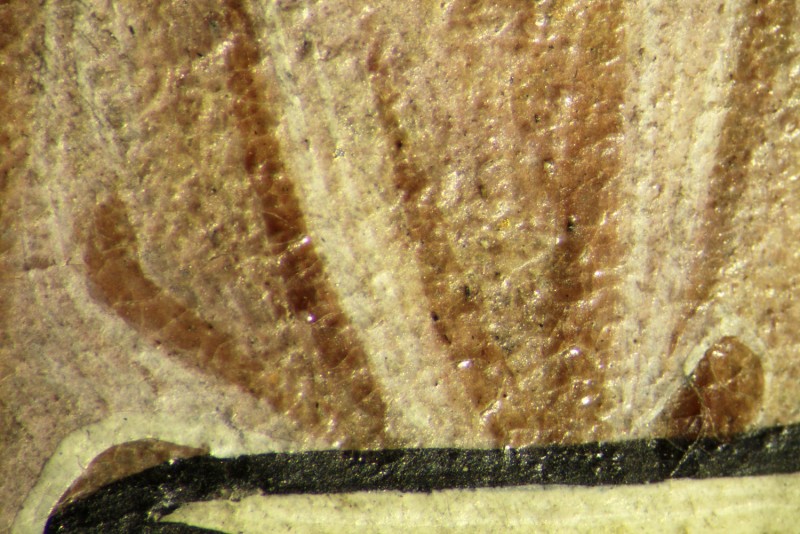Gold tooling
Artists' Techniques
Lines and dots were incised in the highly burnished gold background of many illuminations, from the full-page Crucifixion to the small Calendar initials. In the Crucifixion, the tooling accentuates the form of the cross and embellishes the halos of the richly painted figures. The embossing visible on the surface is, however, an unintended consequence of applying punched motifs to the burnished gold Beatus initial on the reverse of the leaf.

_sharpened and cropped.jpg)


Historiated initial D with Christ in Majesty and a peacock (Psalm 109)
The peacock, which forms the curving ascender of the initial D, symbolises the Resurrection and immortality. The use of silver for the peacock is unique within the manuscript. The dark colour bleeding through the parchment, as well as extensive losses indicate that the metal has tarnished (hotspot 1). Silver was applied over an orange layer containing gypsum and ochre. It appears to have been laid over previous paint layers (hotspot 2).
Christ’s mantle is modelled with lead white highlights and cross-hatching over the ultramarine blue base (hotspot 3). A yellow organic glaze is applied over a white base in the inner part of the mantle. The pink tunic is painted with an organic red dye mixed with gypsum and lead white (hotspot 4).